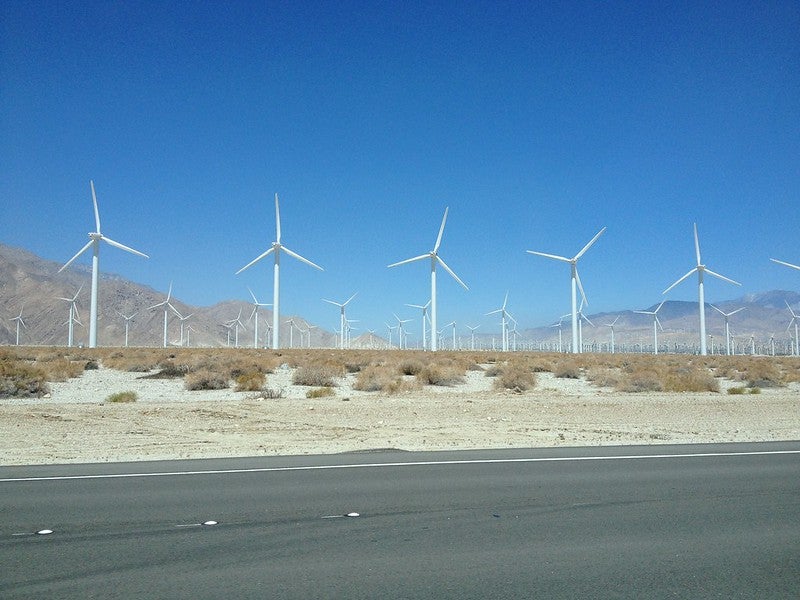
California’s efforts so far
California has been leading the shift to renewables in the US, passing laws to encourage renewable energy production and discourage oil and gas exploration. The state’s efforts to develop its renewable energy sector has also paved the way for similar legislature throughout the country, which could go a long way in mitigating the US’ considerable carbon footprint.
In September 2018, Californian governor Jerry Brown signed a bill into law that committed the state to exclusively sourcing energy from renewable sources by 2045, with a target of 60% renewable energy by 2030, becoming the first US state to aim for a carbon-neutral economy. New York would follow California’s lead in June 2019 by passing the Climate Leadership and Community Protection Act (CCPA).
Brown also took further legislative steps in September 2018 to encourage the development of renewable energy in California and reduce the state’s emissions by signing two bills into law, barring the construction of offshore oil and gas infrastructure to transport oil and gas from federal waters to state land.
In December 2018, California passed a solar power law requiring houses built in the state from 2020 to include rooftop solar panels, becoming the first US state to make it obligatory for solar energy to be installed in single-family and multi-family dwellings, as well as condos and apartment buildings up to three stories.
This new solar infrastructure adds significantly to California’s existing solar power capacity in facilities in desert areas of the state such as the Mojave Desert, ensuring California continues to lead in US solar energy generation.
The challenges of renewable energy
While California’s renewable energy targets represent a positive move for the US energy mix, the state faces a number of challenges with implementing the renewable energy infrastructure needed to meet its lofty goals.

US Tariffs are shifting - will you react or anticipate?
Don’t let policy changes catch you off guard. Stay proactive with real-time data and expert analysis.
By GlobalDataOne of the greatest challenges for California’s renewable energy sector is the consistent supply of renewable energy to consumers despite the intermittent nature of sources such as solar and wind power.
This has caused something the California Independent System Operator has christened the “duck curve”- a daily dip and rise in net load that has been exacerbated by the addition of thousands of megawatts of solar power.
As well as making California’s grid harder to maintain, the rapid influx of renewable energy has increased reliance on natural gas peaker plants to compensate for the dip in net load, hampering the state’s efforts to reduce greenhouse gas emissions.
Another challenge is the Trump administration’s efforts to invest in offshore oil and gas operations in US coastal towns.
While legislation was passed in 2015 prohibiting offshore oil and gas drilling on the outer continental shelf (OCS) of California, Oregon and Washington, in 2018 the US Bureau of Energy Management published a 2019-2024 oil and gas leasing program along the OCS, including Californian waters.
The Trump administration has also been paving the way for offshore oil and gas companies to expand exploration efforts in American waters through the relaxation of a number of safety regulations, as well as the replacement of the Obama-era Clean Power Plan with an Affordable Clean Energy rule that shifts power for determining energy policy back to individual states.
Although these expansion proposals have been heavily contested by coastal towns and government officials fearing environmental damage and disruptions to local business, the Trump administration’s willingness to overturn Obama-era legislation, and its interest in facilitating offshore oil and gas exploration to reduce US independence on imports, could put California’s efforts to reduce emissions in jeopardy.
The state also has to contend with efforts to expand onshore oil and gas exploration, with California lawmakers challenging fracking projects near national parks and wilderness areas in September 2019.
California’s energy future
For California to reach its lofty renewable energy targets, the government must invest in storage and distribution technologies to allow greater control over the state’s power grid and provide reliable energy to homeowners and businesses.
The state has already started to invest in energy storage infrastructure to facilitate the introduction of renewable power generation. Los Angeles’ 2019 Green New Deal initiative calls for increasing cumulative energy storage by 18% to as much as 1,524MW by 2021, and prioritises a number of solar and microgrid backup power projects at municipal facilities.
Another development that could provide a solution to California’s energy storage concerns is the implementation of community choice aggregators (CCAs), allowing customers to directly influence community energy mixes by choosing where and how they buy natural gas and electricity.
While they do create risks of price hikes associated with divestments from the energy grid, CCAs could enable the development of renewable energy infrastructure by encouraging energy companies in California to invest in storage and distribution technologies. This could incentivise the expansion of renewable energy facilities, making renewable energy more commercially viable as a result.


